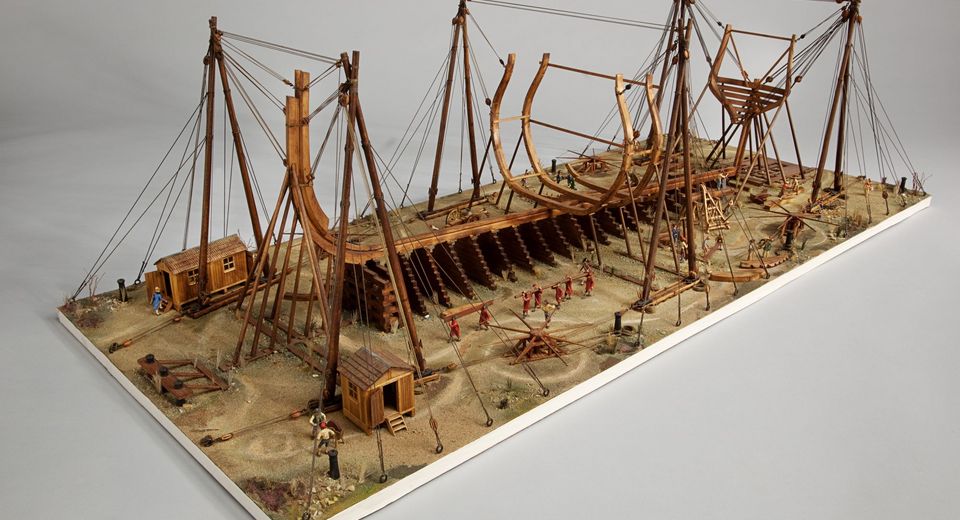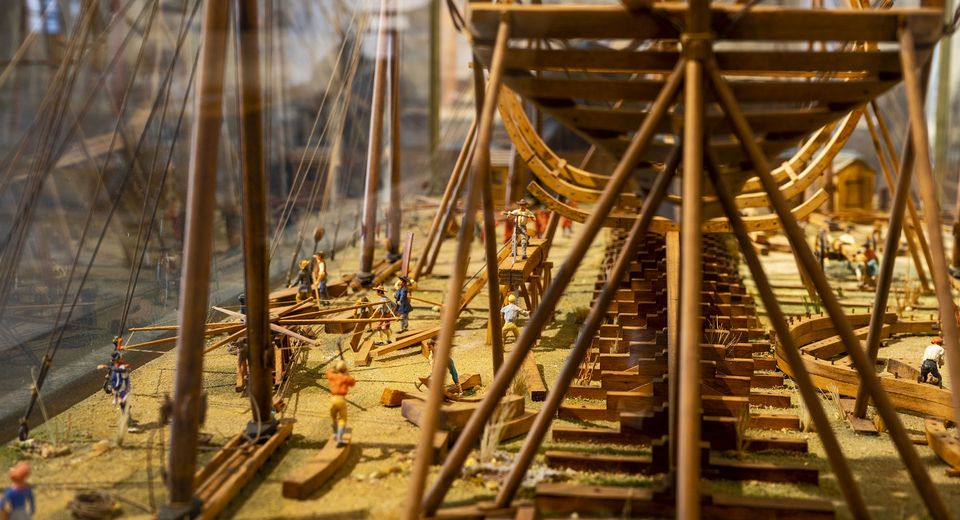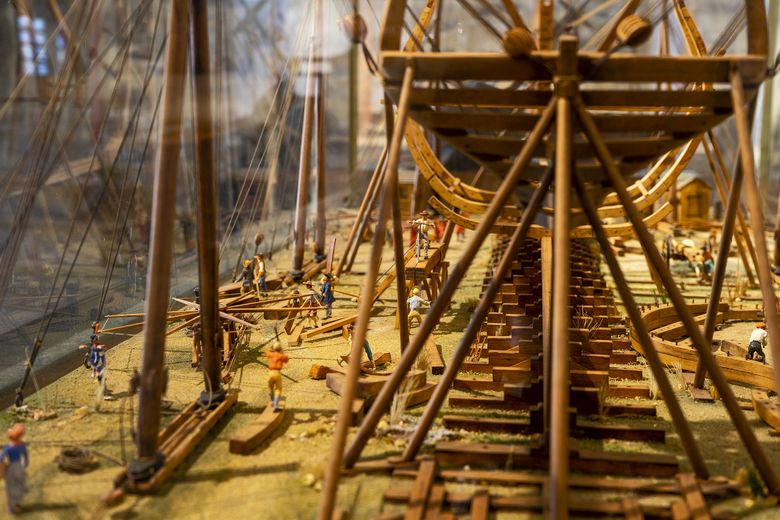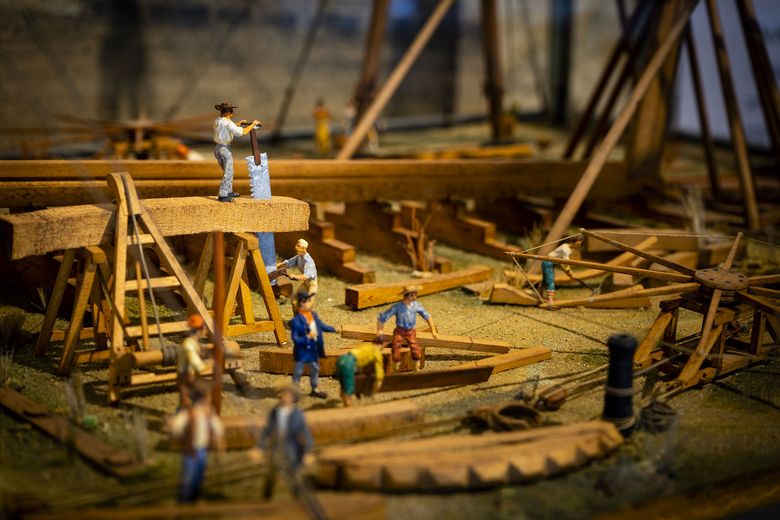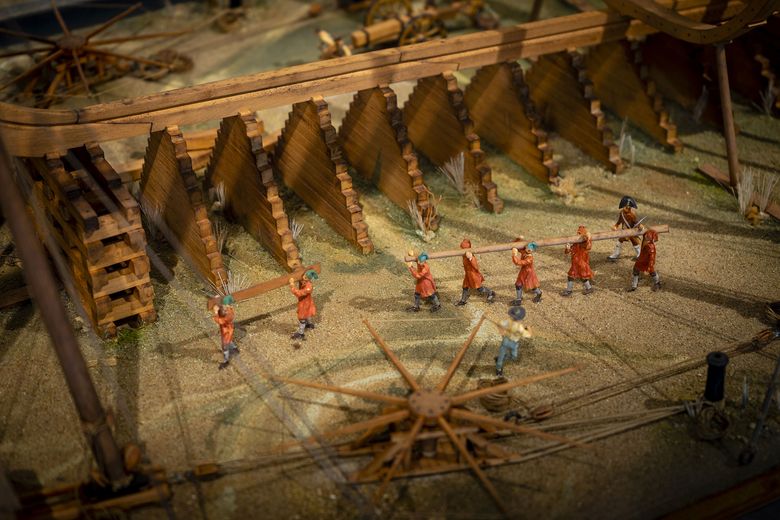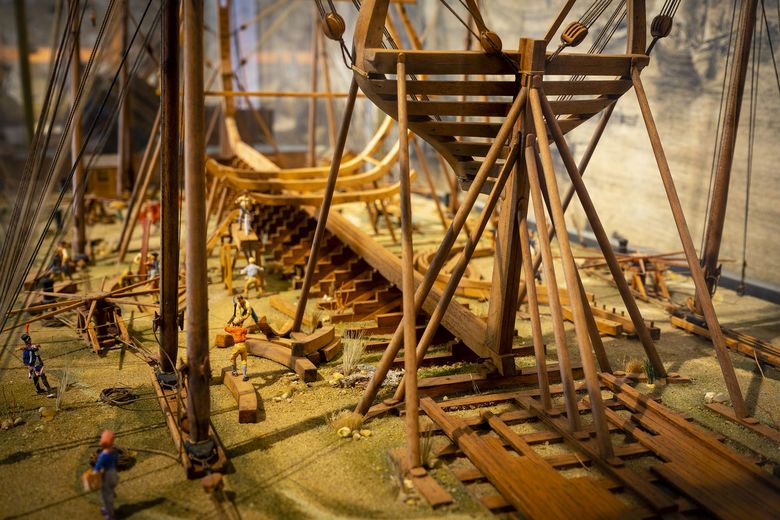A 118-gun ship under construction
Brest
The scene depicts a 118-gun ship being built under the First Empire. The shipyard is sloped in order to facilitate the hull’s launch into the sea. You can make out convicts, recognisable by their red caps, busying themselves around the future ship’s keel. Some of the framework has already been laid.
The construction
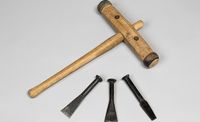 Enlarge image : Outils de calfat
Enlarge image : Outils de calfat
“Arsenal” is the French term for a naval shipyard; it comes from the Arabic dar as sina’a, which means “house where you build”. Workers in the shipyard turned centuries-old oak trees into the hulls of ships of the line and frigates. Pit sawers cut the lengths of wood that formed the keel, stern and sternposts. Piercers used their augers to bore holes in order to assemble the various components.
The boat was built on a sloping surface so as to facilitate its launch. Once the framework had been assembled and pegged, shipwrights set to work on the side planking. In order to ensure the necessary curvature, planks were heated in ovens to provide them with the flexibility required. Finally, caulkers inserted oakum between the planks to ensure the hull’s watertightness. Later on, sailmakers and ropemakers prepared and installed the ship’s rigging: masts, stays, guy ropes, sails, halyards and sheets.
Women were also in evidence on the site, which has sometimes been described as preindustrial, many of them working as oakum pickers. It took between 12 and 18 months to build a ship from keel laying to launch.
The 118-gun ship
Following adoption of the standard plan for 74-gun ships, the plan for 118-gun ships was adopted on 30 September 1785. It was drawn up by Jacques-Noël Sané.
The ship had to carry 118 cannons; its lower battery had sixteen gunports armed with 36-pounder cannons, while the second battery had to be armed with 24-pounders, the third with 12-pounders and the forecastle with 8-pounders.
The vessel was 196 feet (63.82 metres) long from stem to stern and 50 feet (16.25 metres) wide, with a crew of around 1,100 men.
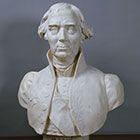
Jacques-Noël Sané (Brest,1740 – Paris,1831)
Duhamel du Monceau’s student at the École de Paris in 1765, Sané, who was later to be nicknamed “the Vauban of the Navy”, showed a flair for naval architecture early on in life. Graduating as an engineer and shipbuilder in 1774, he created a number of first-rate vessels, including the Annibal, which did a fine job during the American Revolution’s campaigns. Between 1782 and 1787, after being noticed and supported by Chevalier de Borda and the Minister of the Navy, Sané won the three competitions for adoption of standard plans for 74-, 80- and 118-gun ships, leading to the standardisation of military shipbuilding. Sané became a member of the Royal Academy of the Navy in 1786 and Director of the Port of Brest in 1793. An outstanding designer, whose ship plans inspired Europe’s navies, he managed to stay apolitical enough to survive all the regimes he lived under. Inspector General of Maritime Engineering from 1800 to 1817, member of the Institute, Baron of the Empire and Grand Officer of the Legion of Honour, Sané left his mark on all aspects of French naval architecture between the last third of the 18th century and the end of the sailing navy around 1850.
Diorama
Collection highlight
The essential works to see during your visit to the Musée national de la Marine in Brest, Port-Louis, Rochefort, Toulon, and soon in Paris.

